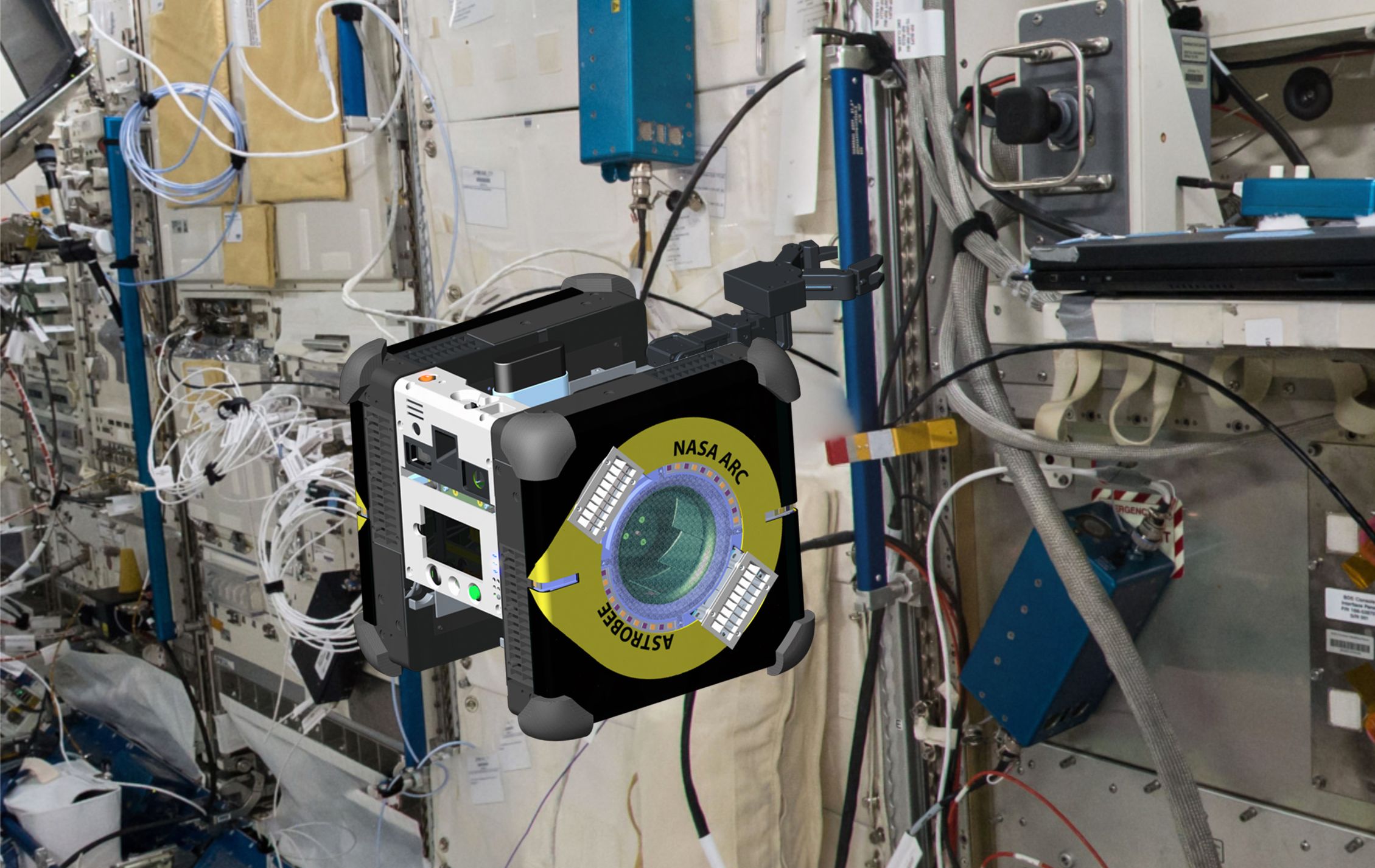Astrobee: NASA's Newest Robot for the International Space Station
Small, versatile, and autonomous, Astrobee will be getting to work on the ISS

The International Space Station will soon be getting some new robot occupants. Astrobee is a robotic cube packed with sensors, cameras, computers, and a propulsion system. It’s designed to help astronauts around the ISS with a variety of tasks.
While the robot is designed to fly freely on board the ISS, for testing on the ground, Astrobee is mounted on top of a sled that uses a jet of CO2 to create a low-friction air bearing above a perfectly flat (and very enormous) block of granite. This allows the researchers to simulate microgravity in two dimensions to test the robot’s propulsion and navigation systems, but once it’s up in space, the entire robot will consist of just the cube that’s defined by the blue bumpers, without all of the stuff underneath it.
Last fall, IEEE Spectrum visited NASA Ames Research Center in Mountain View, Calif., to have a look at the latest Astrobee prototype and meet the team behind the robot.
NASA expects to have Astrobee on orbit at some point between July 2017 and June 2018. They’ll be sending three of them to the ISS, although they only expect two robots to be active at once: The third will be packed away in a space closet somewhere.
Read More: How NASA's Astrobee Robot Is Bringing Useful Autonomy to the ISS
Evan Ackerman is a senior editor at IEEE Spectrum. Since 2007, he has written over 6,000 articles on robotics and technology. He has a degree in Martian geology and is excellent at playing bagpipes.